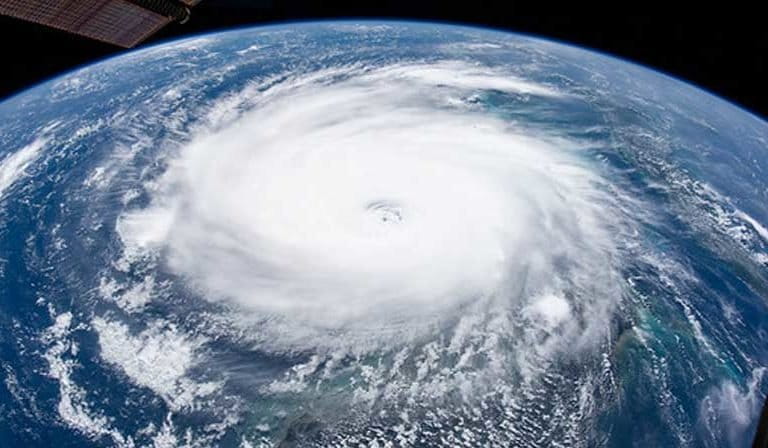JAKARTA — The Indonesian government has denied that deforestation for oil palm plantations and coal mines contributed to a recent deadly flood in southern Borneo. At least 21 people died…
JAKARTA — Recent floods that inundated large areas of the southern part of Indonesian Borneo might have been exacerbated by massive deforestation for oil palm plantations and coal mines, activists…
The planned 650 MW dam on the Rio Branco in Brazil’s Roraima state is scheduled to become operational in 2028; it could do extraordinary socio-environmental harm.
Brazil’s current 10-year Energy Expansion Plan calls for three more large dams in Amazonia by 2029, and the country’s 2050 National Energy Plan lists many more — putting the environment at risk.
JAKARTA — Newly published research has linked the spread of oil palm and rubber plantations across a watershed area of Indonesia’s Sumatra Island to worsening floods in the region. The…
Like the rainforest which takes its name, the Amazon is the largest and most biodiverse river on the planet: the Amazon carries more than five times the volume of world's…
Hundreds of dams are planned within global protected areas, a prospect that threatens people, plants and animals that rely on the lifegiving waters of free-flowing rivers. According to a first-of-its-kind…
Some 600 indigenous people have seen their crops die due to the expansion of agribusiness in the state of Pará, Brazil. The streams used by the Munduruku have also been damaged, if not dried up.
Extreme flooding in the Ecuadoran Amazon has caused widespread disarray along the banks of the Bobonaza River, all amid the COVID-19 pandemic. Over the past couple of weeks, the surging…
JAKARTA — The Waladuna mosque is submerged in a meter of seawater, about 3 feet deep. It’s low tide in northern Jakarta. During high tide, the water creeps up to…
New research finds that if humans carry on with business as usual and the environmental degradation that results, we will pay a steep price — quite literally. Researchers with WWF,…
A survey of 40,000 existing and 3,700 planned dams finds that the structures could fragment fish habitat in the Amazon, Niger, Congo, Salween and Mekong river systems by 25% or more.
JAKARTA — The Indonesian government has shut down 26 mining pits on the hilly outskirts of Jakarta, following floods and landslides last month exacerbated by environmental degradation in the area.…
SAMARINDA, Indonesia — Major flooding from just a few hours of heavy rain in Samarinda, Indonesia’s coal-mining capital, has underscored the severity of the environmental degradation being carried out by…
In an exclusive interview with Mongabay, Marcelino Guedes, a researcher at Brazil’s Amapá Federal University, talks about how important the management of traditional knowledge is for strengthening the forest economy in Brazil to overcome the paradigm that sees standing forest as an enemy of development.
Indigenous group entered Brazilian museum and retrieved sacred funeral urns that courts said were rightly theirs, but which dam construction firm and authorities kept from them.
Once used for leisure, navigation and fishing, almost all of the 150 small waterways, or igarapés, in the Amazonian city of Manaus are totally polluted. Experts say it could take up 30 years for them to recover, while others are considered “dead.”
JAKARTA — The recent deadly flooding in Indonesia’s capital Jakarta and nearby cities has renewed calls from activists for the government to strengthen environmental protection and boost efforts to adapt…
JAKARTA — Flash floods triggered by the heaviest rains ever recorded in Jakarta wreaked havoc across the Indonesian capital and its satellite cities on the first day of the new…
Meet Heng Kim Seng, Cambodia's bat man. In a few years, he went from rice to riches all because of bats. Under the Khmer Rouge, he hauled human waste to…
A researcher at the INPE Center of Land System Science, Antonio Donato Nobre, describes the state of degradation threatening the future of the Amazon rainforest in an exclusive interview with Mongabay.
Brazil started the decade as an example to the world, dramatically curbing Amazon deforestation, but under Jair Bolsonaro the nation is moving toward ecological ruin.
Most of us have places where we feel safe — a tree in our backyard, a den in our house, a beach in our town. But these days, some “safe…
SANTARÉM, Brazil, and BERLIN — I got off the mototaxi, a means of transportation that is part of everyday life in several cities in the Amazon, took off the helmet…
Research and recent events demonstrate that climate change is intensifying and destabilizing the annual monsoon, with impacts not just for India but the world.
As a torrent of demoralizing disasters and doomsday climate studies pour forth, how do we resist despair, where can we find hope – and most important of all – how should we live?
The world is in a slow-moving, persistent water crisis. Rapidly rising water usage, increasingly uncertain rainfall, and widespread water pollution push more of our world into water stress and intensify…
TAPUWATU, Indonesia — Muhammad Arfa says he thinks a miracle saved his home. A wave of mud that swept through this riverside village on the Indonesian island of Sulawesi when…
Eight past environmental ministers assail policies. Amazon Fund and 334 Brazilian parks at risk; sweeping illegal deforestation amnesties head to approval.
13 tons of oxygen-starved fish died as water filled the new Sinop dam reservoir, a project of French firm Electricité de France (EDF), along with Brazilian companies.


































































